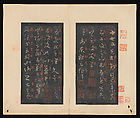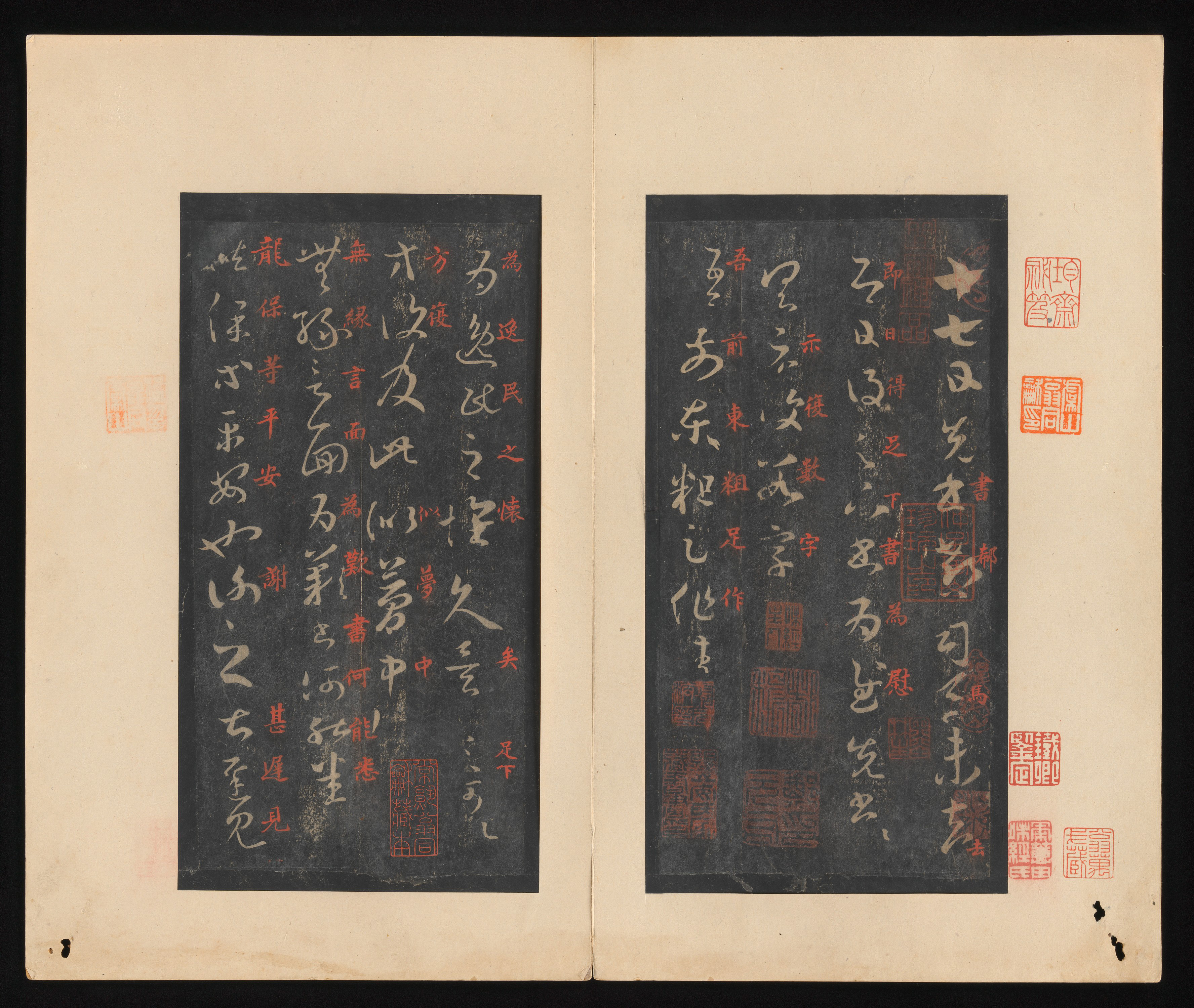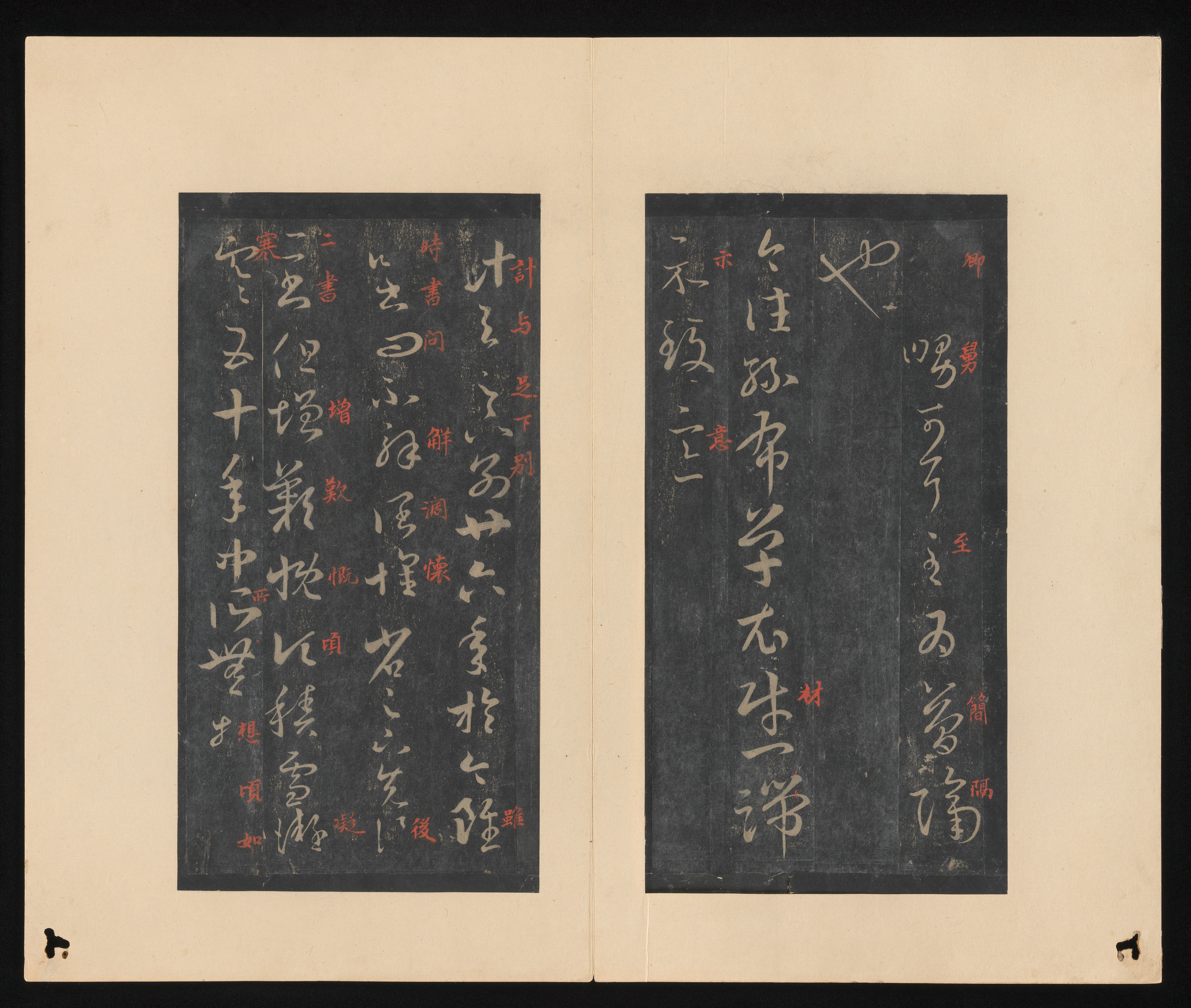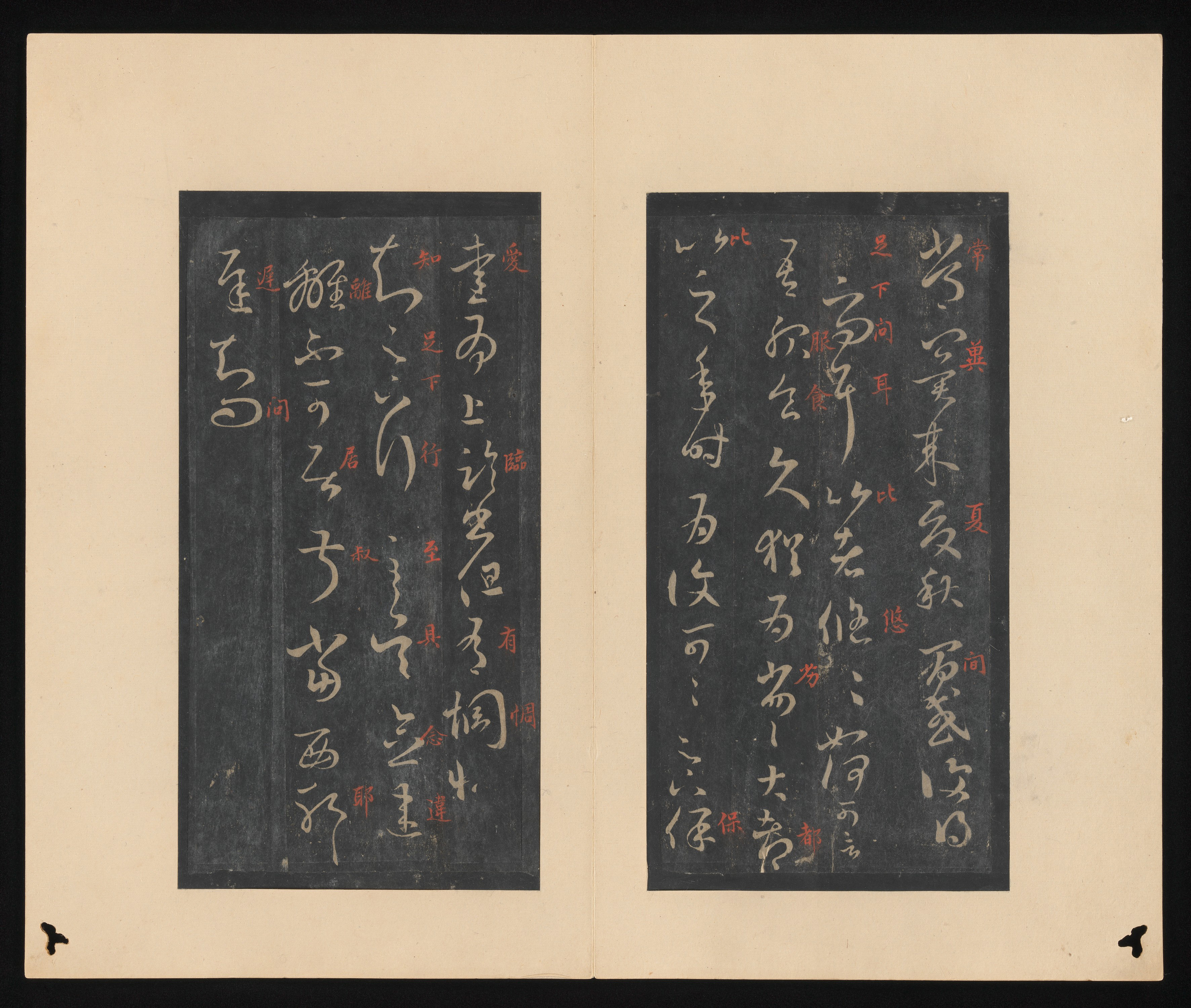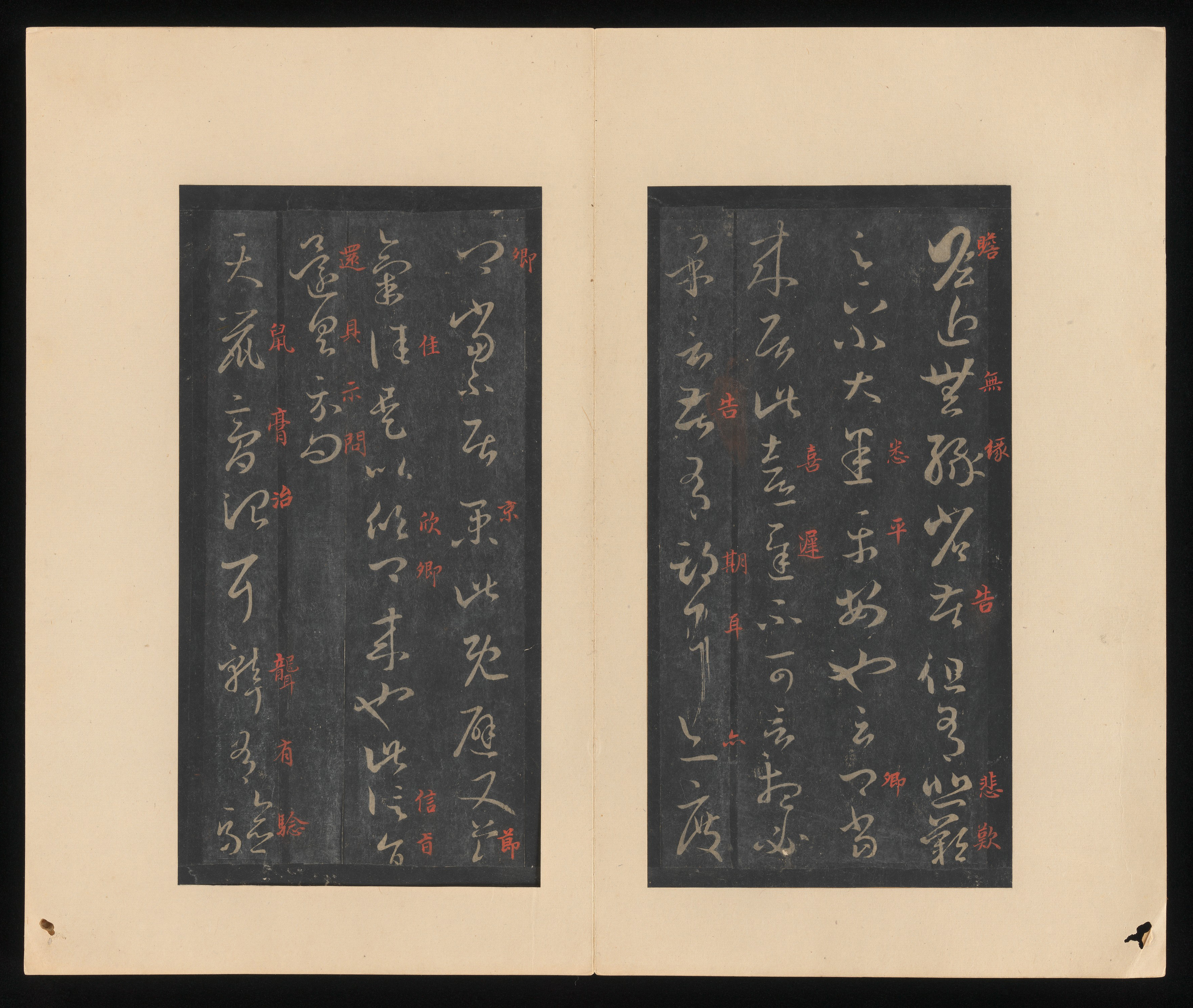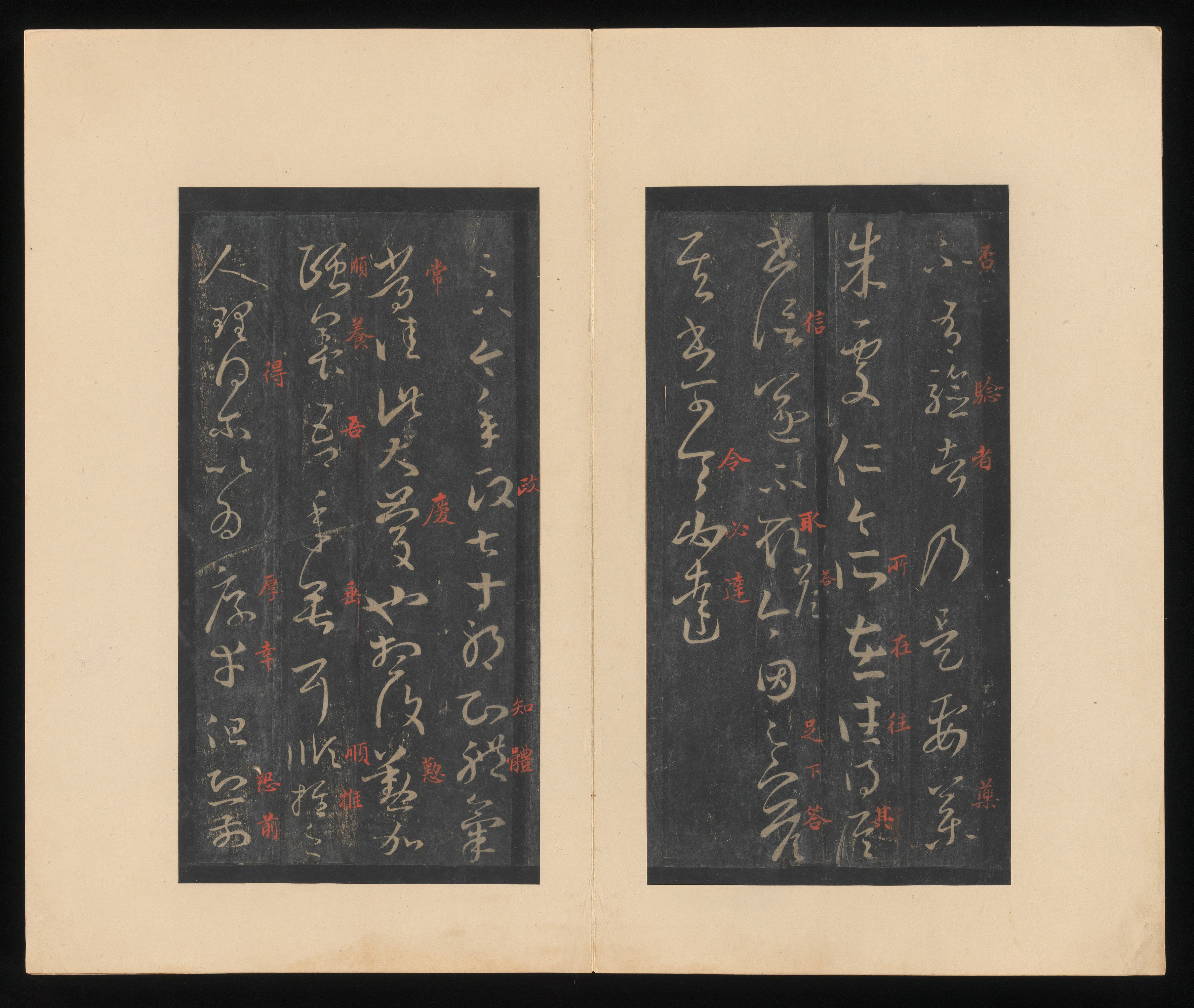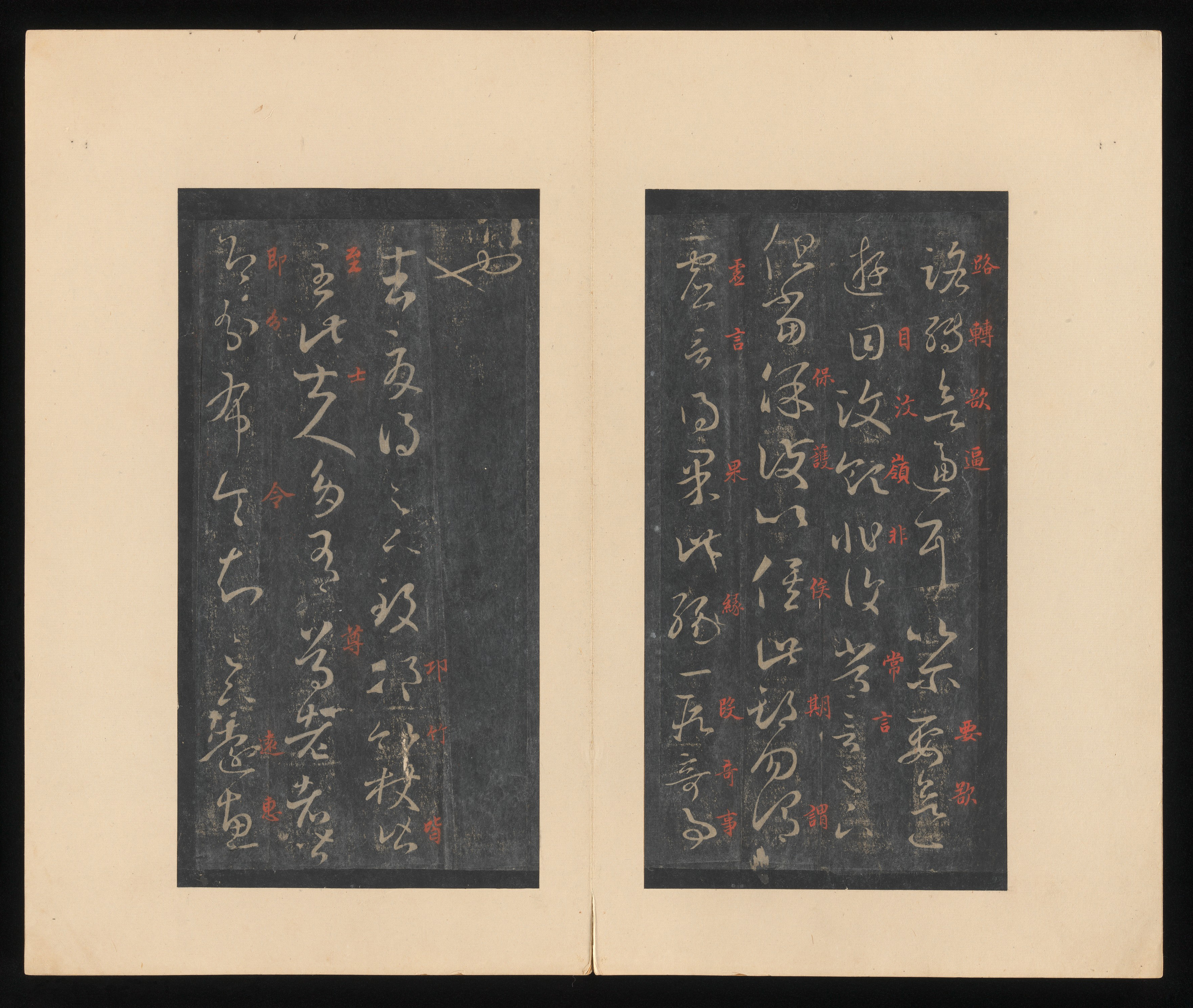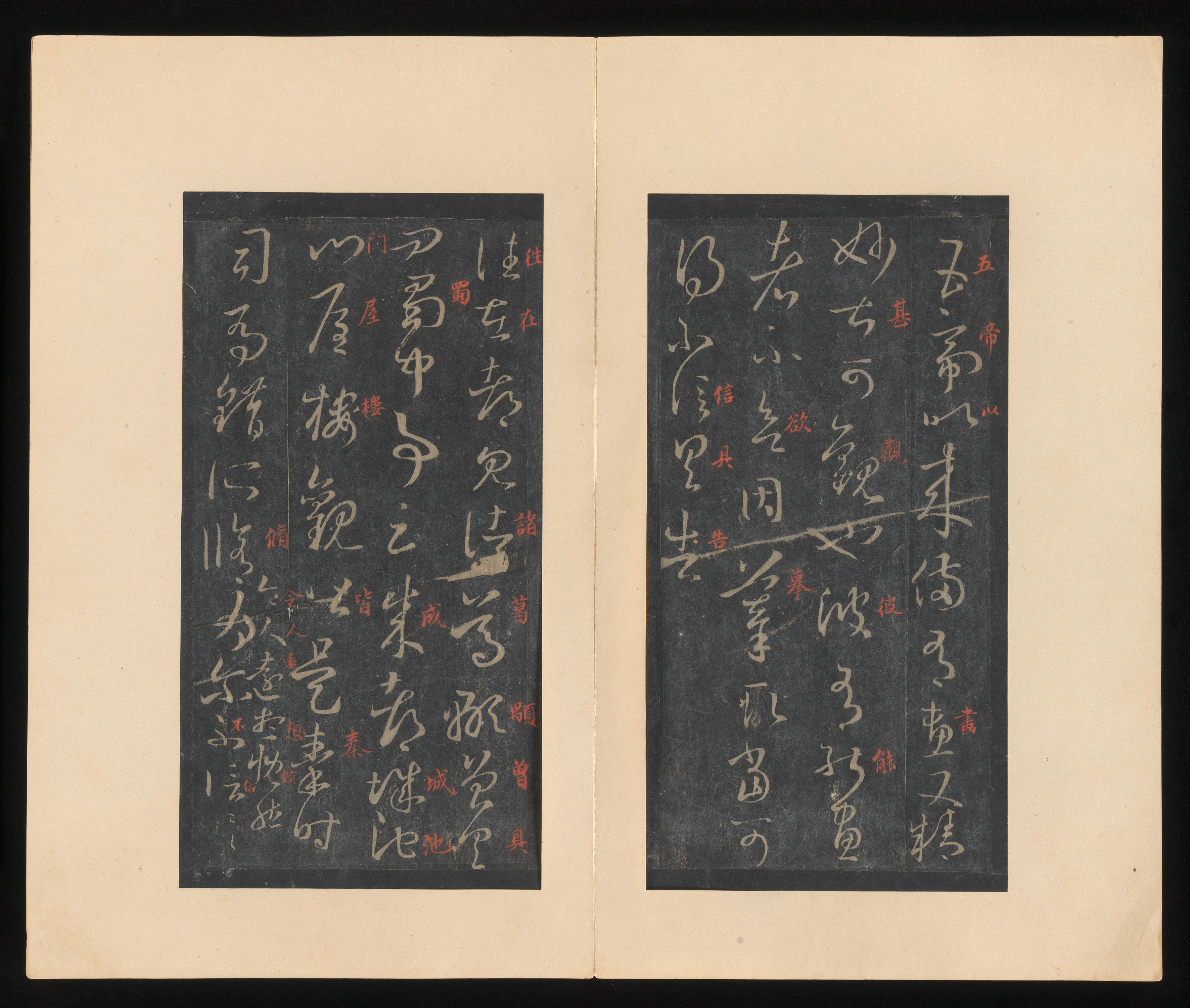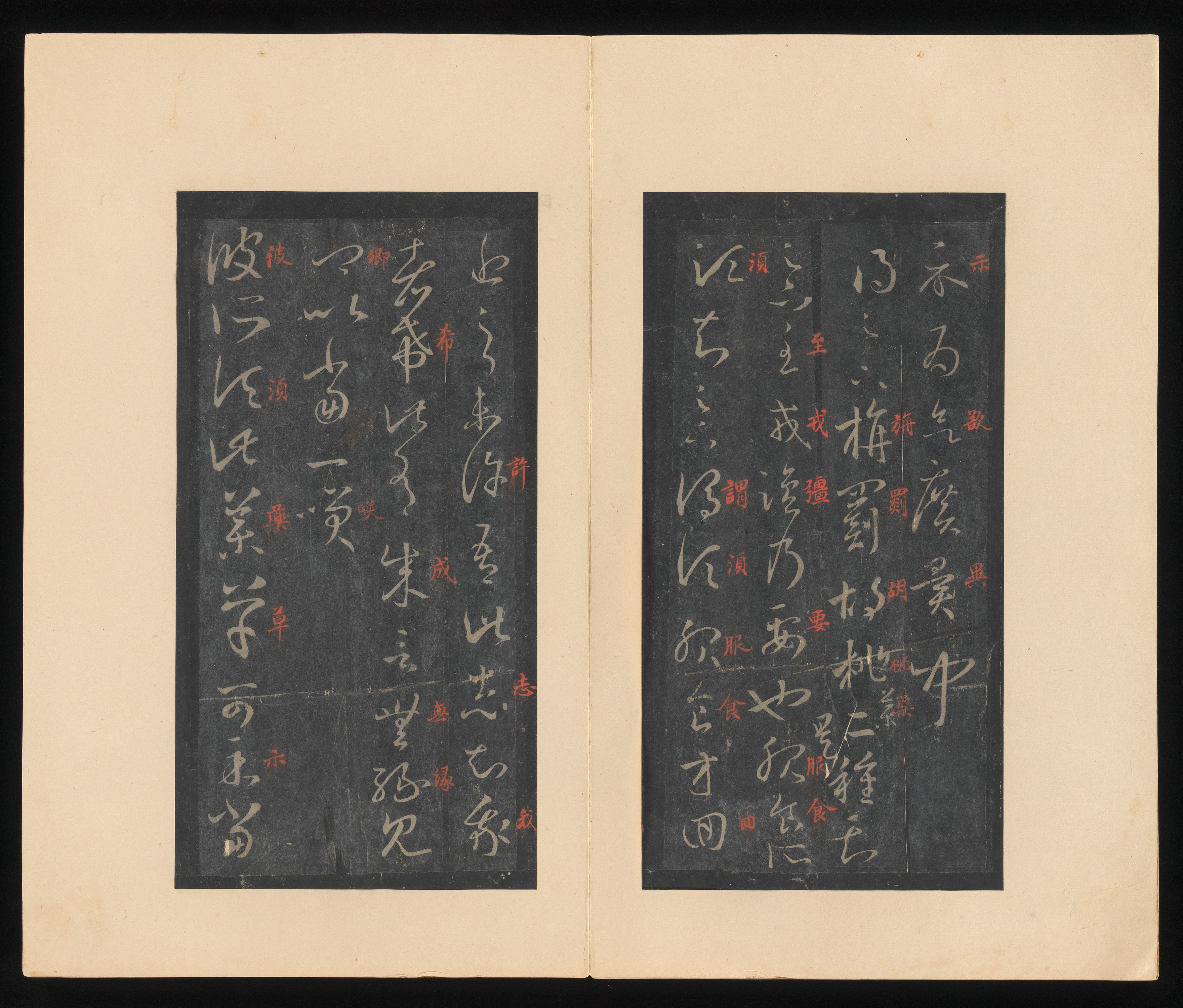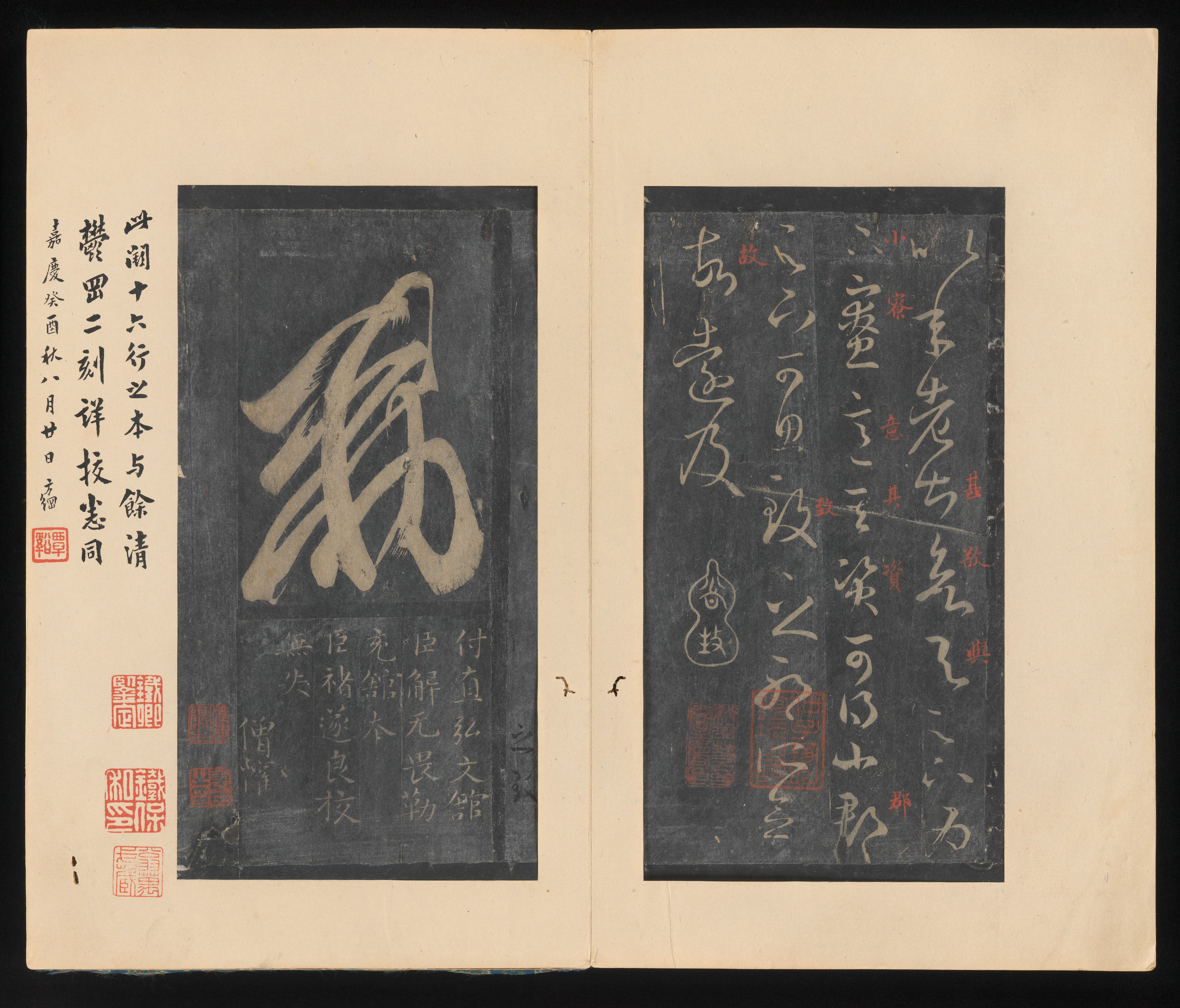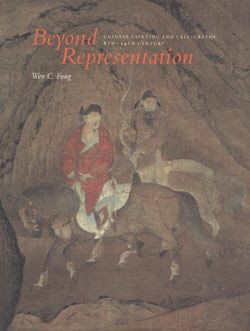On the Seventeenth Day
Calligrapher Wang Xizhi Chinese
Not on view
In pre-modern China, the key technology for replicating calligraphy was the rubbing. To create a rubbing, the original calligraphy was carefully traced, blocks of stone or wood were carved from the tracing, and impressions were made from the blocks. The rubbings in this album preserve twenty-nine letters by Wang Xizhi, the most important calligrapher in Chinese history. By the thirteenth century, when these impressions were taken, the album had become a common format for storing sets of disparate calligraphic rubbings. The ability to flip pages quickly and to store pieces of various sizes and shapes made albums superior to scrolls for this purpose.
This image cannot be enlarged, viewed at full screen, or downloaded.
This artwork is meant to be viewed from right to left. Scroll left to view more.
